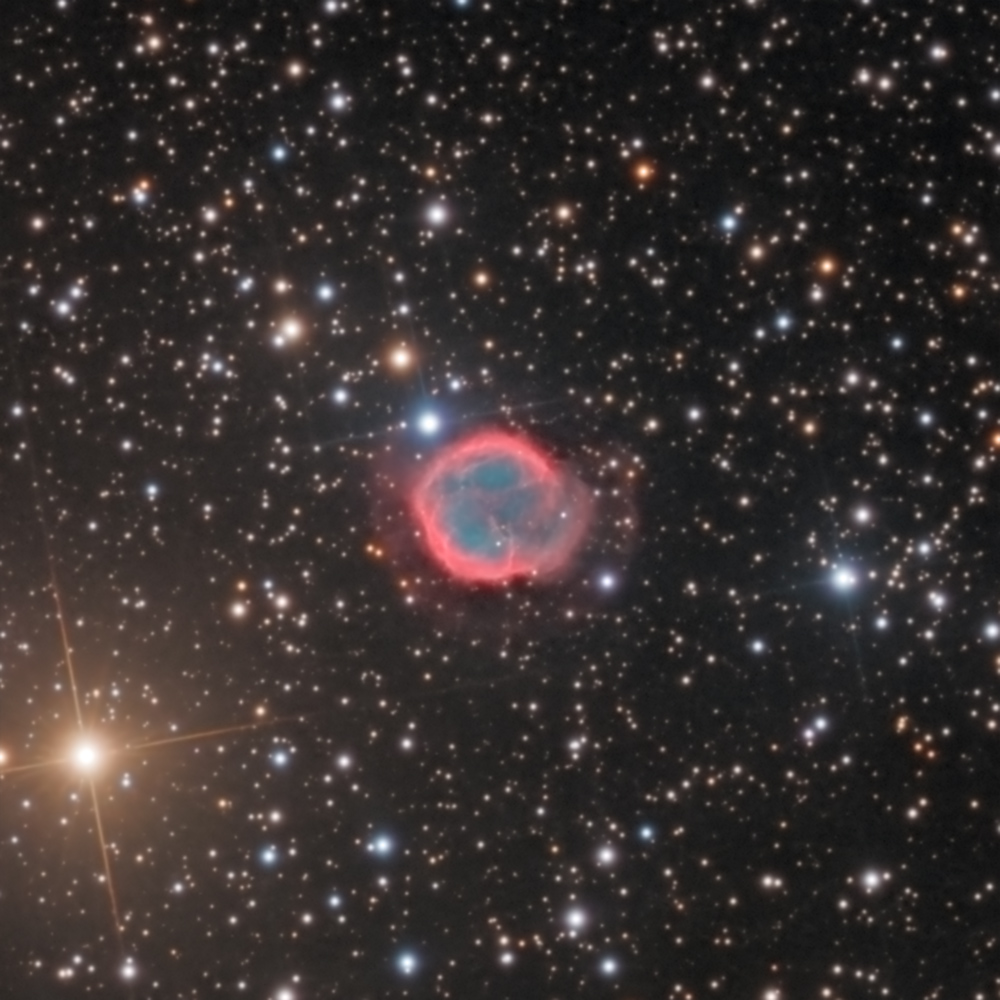

NGC7048 is a planetary nebula, visually located
in the constellation Cygnus, in the midst of the Milky Way disc as seen from earth (so it appears to be in a dense star field). Technical Information: (HaL)(HaR)(OIIIG)(OIIIB): Ha:OIII:L:R:G:B--720:810:657:195:195:240 (almost 47 hours of total exposure time); Luminance layer is a blend of 39 fifteen-minute images through the
luminance filter, 24 three-minute images through the luminance filter, and 24 thirty-minute images through the Ha filter; Red channel is a blend of the Ha data and 13 fifteen-minute images through a red
filter; Green channel is a blend of 27 thirty-minute images through an OIII filter and 13 fifteen-minute images thorugh a green filter; the Blue channel is a blend of the OIII data and 12 twenty-minute
images through a blue filter. All images were unbinned. Equipment: RC Optical Systems 14.5 inch Ritchey-Chrétien carbon fiber truss telescope, with ion-milled optics and RCOS field flattener, at about f/9, and an
SBIG STX-16803 with internal filter wheel (SBIG filter set), guided by an SBIG AO-X/STX Guider, all riding on a Bisque Paramount ME German Equatorial Mount. Image Acquisition/Camera Control: Maxim DL, controlled with ACP Expert/Scheduler, working in concert with TheSky X. Processing: All images calibrated (darks, bias and sky flats), aligned, and combined in Pixinsight. Color combine in Pixinsight. Blending narrowband and broadband data done in Pixinsight.
Some finish work (background neutralization, color calibration, gradient removal, NoiseXTerminator and BlurXTerminator) done in Pixinsight; some finish work (LRGB combination, contrast
and saturation adjustment) was done in Photoshop CC. Location: Data acquired remotely from Sierra Remote Observatories, Auberry, California, USA. Date: Images taken on many nights during September and October of 2022. Image posted November 24, 2022. Date: Image scale of full-resolution image: 0.56 arcseconds per pixel. Seeing: Generally good
CCD Chip temperature: -25C Copyright 2022, 2025 Mark de Regt
This tiny (apparent size) nebula is approximately 5300 light years from us; with an apparent diameter of about 1 arcminute, it is about 1.5 light years in diameter (assuming that distance from us is correct).